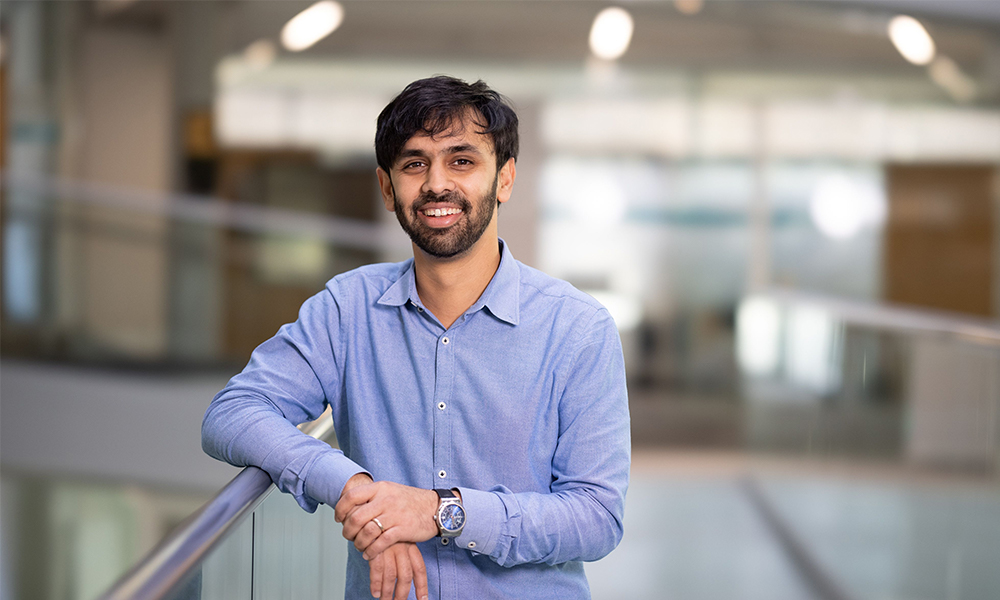
Read the latest Issue
The new group leader is fascinated by the evolutionary origins of the nucleus, and doesn’t miss a chance to get stuck into some cult cinema

I’m particularly interested in the evolution of the cell’s nucleus. Using a combination of different approaches, we aim to understand the reasons for the startling diversity in the way the nucleus is organised in eukaryotes. The nucleus is in fact the defining feature of these organisms (it’s even in the name!), setting them apart from the ‘prokaryotic’ bacteria and archaea. Ultimately, we’re trying to uncover fundamental, unifying principles of nuclear organisation – and in doing so, eventually we hope to shed light on its evolutionary origins.
The Sulfoscope is the world’s first 75°C microscope – purpose built to provide real-time imaging of growing and dividing archaea that are extremophiles. These are organisms that have evolved to successfully survive – and even thrive – in some of the harshest environments on the planet. That can mean facing extremes of temperature, pressure, pH, or other conditions. Studying these organisms helps us understand the limits to which biological systems can be pushed. This has implications for everything from evolutionary biology to climate change, or even something like the possibility of human survival on Mars. Designing, building, and testing the Sulfoscope evolved into a massive team effort, and the work continues at the MRC Laboratory of Molecular Biology in Cambridge.
Our research, with its mix of evolutionary biology, genomics, and cell biology, is interdisciplinary almost by definition. That makes it a perfect fit for EMBL in general, and the Heidelberg site in particular. Some of our work will involve non-traditional microbial systems, pushing tools for electron and particularly light microscopy to their limits. We’re looking forward to productive collaborations with the Advanced Light Microscopy Facility, the Electron Microscopy Core Facility, and hopefully soon with the brand new EMBL Imaging Centre. Our interest in the evolutionary diversity of nuclear organisation also intersects neatly with one of EMBL’s new transversal themes – Planetary Biology.
I’m not sure if my stunted theatre career makes me a better judge of anything! For what it’s worth, some of my favourite movies of all time include:
Overlooked tales abound! There are so many good stories of scientific brilliance, and triumph in the face of adversity – especially if you take a look outside the traditional academic centres of North America and Europe. Veronica Rodrigues is a perfect example. She was a visionary neurobiologist and one of the first women to rise to a leadership role in academia in India. Her pioneering journey from young immigrant in Kenya and Uganda, to leading biologist at India’s top research institute – with a life cut tragically short by cancer – is irrevocably intertwined with the story of modern Indian science. Her life and achievement would be amazing to see on the big screen. Veronica left an indelible impression on everyone she met, including me, a young undergraduate student at the time. The summer I spent in her lab was a genuinely formative experience. I knew at the end of those two short months that the life of a scientist was the life for me.
By far the most exciting thing is that I will no longer be tackling it alone. Working at EMBL will mean benefiting from the different skills and experiences that other people bring to the lab, and discovering new synergies with research groups across the organisation. Many of the questions I’m thinking about have been obsessing me for a long time, so it’s great to have new collaborators to work alongside, inside and outside the lab. When this is combined with the fantastic infrastructural support that EMBL provides, it’s fair to say that I’m thrilled to finally get started!
Looking for past print editions of EMBLetc.? Browse our archive, going back 20 years.
EMBLetc. archive